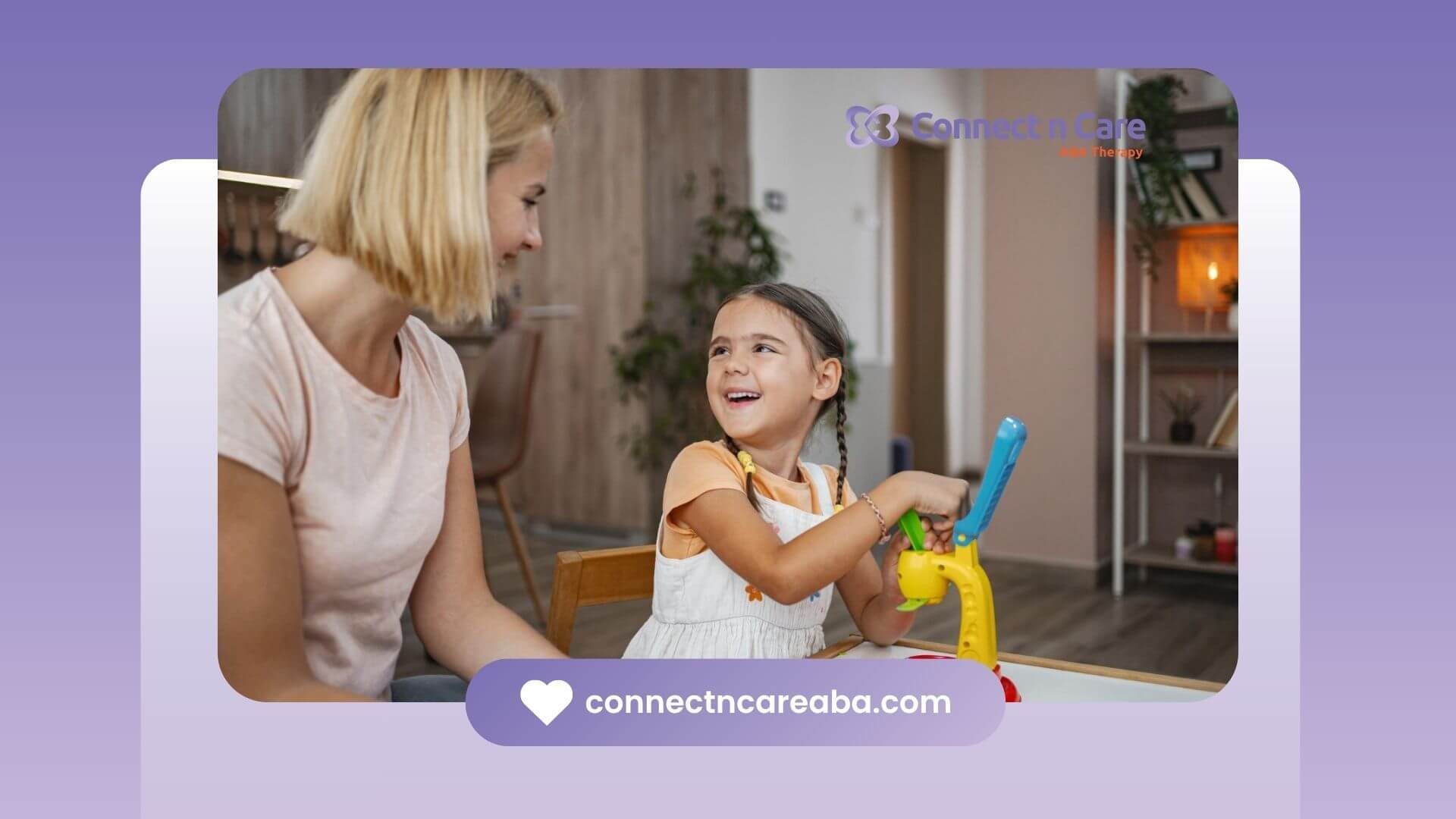Ever wondered why rewarding good behavior often works better than punishing bad behavior? Positive reinforcement is a powerful strategy that encourages desired actions through rewards, leading to lasting and meaningful changes. In this article, we'll explore the techniques and examples of positive reinforcement, compare it to negative reinforcement, and show how Connect N Care support families in North Carolina using these effective methods.
What is Positive Reinforcement?
Positive reinforcement involves adding a rewarding stimulus after a desired behavior is exhibited, making it more likely that the behavior will occur again. This method leverages rewards to encourage and strengthen positive behaviors. For example, when a student receives praise for completing their homework on time, they are more likely to complete it promptly in the future due to the positive reinforcement provided by the praise.
Behavioral Psychology Basis
Positive reinforcement is rooted in behavioral psychology, particularly in B.F. Skinner's work on operant conditioning. Skinner demonstrated that behavior could be shaped and maintained by its consequences, specifically through reinforcement. Positive reinforcement, therefore, is a fundamental principle in shaping behaviors by providing a positive outcome following a desired action.
Positive Reinforcement Examples
Here are some common examples of positive reinforcement in various settings:
In Education
Teachers often use positive reinforcement to encourage good behavior and academic performance. For instance, a student who completes their homework on time might receive praise, a sticker, or extra recess time. This motivates other students to also complete their homework on time, knowing that they too can earn similar rewards.
At Home
At home, parents can use positive reinforcement to promote good behavior in their children. For example, a child who cleans their room might get extra screen time or a special treat. This not only encourages the child to maintain a clean room but also instills a sense of responsibility and pride in their living space.
In the Workplace
Employers can motivate employees through positive reinforcement. For instance, an employee who meets their sales targets might receive a bonus, a certificate of recognition, or a day off. This boosts morale, encourages a productive work environment, and fosters loyalty and dedication to the company.
In ABA Therapy
In applied behavior analysis therapy, or ABA, therapists use positive reinforcement to encourage desired behaviors in children with autism. This could include giving a child a favorite toy or a piece of candy for following instructions or completing a task. Consistently applying these rewards helps reinforce the behaviors and integrates them into the child’s daily routine.
Positive Reinforcement vs. Negative Reinforcement
While both positive and negative reinforcement aim to increase the likelihood of a behavior occurring, they do so in different ways.
Positive Reinforcement
Positive reinforcement involves adding a pleasant stimulus to encourage a behavior. For example, giving a child praise for doing their homework increases the likelihood that they will complete it again. The key element is the introduction of a positive condition that reinforces the behavior.
Negative Reinforcement
Negative reinforcement involves removing an unpleasant stimulus to encourage a behavior. For example, a child might clean their room to stop a parent’s nagging. The removal of the nagging serves as the negative reinforcement, encouraging the cleaning behavior. Here, the behavior is reinforced by the removal of an adverse condition.
Key Differences
The main difference lies in the type of stimulus used — positive reinforcement adds a favorable condition, while negative reinforcement removes an unfavorable one. Both techniques are effective in different scenarios and can be used complementarily in behavior modification programs.
Benefits of Positive Reinforcement
Positive reinforcement is effective for several reasons:
Builds Positive Relationships
Using positive reinforcement helps build trust and positive relationships between the person giving the reinforcement (e.g., teacher, parent, therapist) and the individual receiving it. When individuals feel valued and recognized for their efforts, it fosters a more supportive and encouraging environment.
Encourages Consistency
Positive reinforcement encourages consistent behavior because individuals learn that positive actions result in positive outcomes. This consistency is crucial in behavior modification, as it helps individuals understand the link between their actions and rewards, leading to sustained behavioral changes.
Boosts Self-Esteem
Receiving positive reinforcement can boost an individual’s self-esteem and confidence, motivating them to continue exhibiting the desired behavior. This is particularly important for children, as it helps them develop a positive self-image and a can-do attitude.
Promotes a Positive Learning Environment
In educational and therapeutic settings, positive reinforcement creates a more positive and conducive learning environment. Students and clients are more likely to engage, participate, and thrive when they feel their efforts are appreciated and rewarded.
How to Implement Positive Reinforcement
To effectively use positive reinforcement, consider the following tips:
Be Specific
Clearly identify the behavior you want to reinforce. Instead of saying "Good job," specify what was done well, such as "Great job cleaning up your toys." This specificity helps the individual understand exactly what behavior is being rewarded.
Use Immediate Reinforcement
Provide reinforcement immediately after the desired behavior occurs to strengthen the association between the behavior and the reward. Delayed reinforcement can weaken the connection and reduce the effectiveness of the technique.
Choose Meaningful Rewards
Select rewards that are meaningful and motivating to the individual. This could be praise, a favorite activity, or a small treat. The more personalized the reward, the more effective it will be in reinforcing the behavior.
Be Consistent
Consistency is key in reinforcing desired behaviors. Make sure to apply positive reinforcement regularly and predictably. Inconsistent reinforcement can lead to confusion and reduce the effectiveness of the technique.
Gradual Fading
Over time, gradually fade out the tangible rewards while maintaining verbal praise and encouragement. This helps the individual internalize the behavior, making it a natural part of their routine without always expecting a tangible reward.
Conclusion
Positive reinforcement is a powerful technique for encouraging desired behaviors and fostering a positive learning environment. By understanding and effectively implementing positive reinforcement, parents, teachers, and therapists can help individuals achieve their goals and improve their behavior.
For families in North Carolina, Connect N Care offers personalized ABA therapy services that utilize positive reinforcement to support the development and success of children with autism. Contact us today to learn more about our ABA therapy services and how we can support your family in using positive reinforcement to achieve meaningful progress.
FAQs
What are some examples of positive reinforcement?
Examples include giving praise, rewards, or privileges for desired behaviors, such as completing tasks, following instructions, or showing good manners. Specific examples can range from verbal praise to tangible rewards like stickers or extra playtime.
How does positive reinforcement differ from negative reinforcement?
Positive reinforcement adds a pleasant stimulus to encourage a behavior, while negative reinforcement removes an unpleasant stimulus to achieve the same effect. Both techniques aim to increase the likelihood of a behavior but use different methods.
Can positive reinforcement be used for all ages?
Yes, positive reinforcement is effective for individuals of all ages, from young children to adults, in various settings like home, school, and work. The key is to tailor the rewards to be age-appropriate and meaningful to the individual.
What are the benefits of positive reinforcement?
Benefits include building positive relationships, encouraging consistent behavior, boosting self-esteem, and promoting a positive learning environment. These benefits contribute to overall well-being and effective behavior modification.









